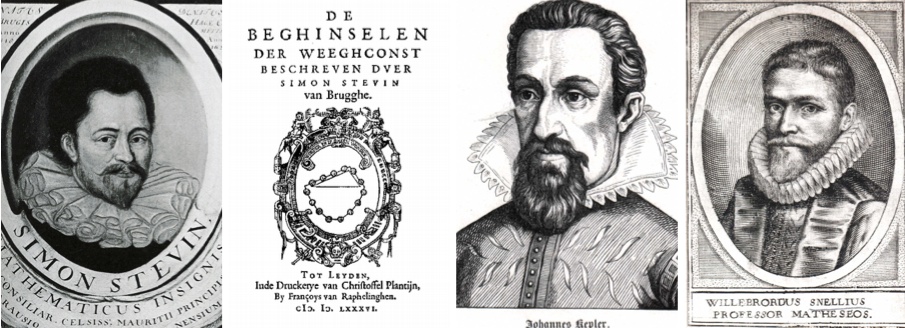

It was in Antwerp that Simon Stevin (1548 – 1620) learned and matured to become one of the greatest geometers in the period between Archimedes and Newton. One of his earliest booklets was, as far as known, the first real publication of tables of interests. His booklet “De Thiende” (1585) definitely settled the concrete performance of all calculations involving real numbers in terms of computations exclusively dealing with natural numbers, by making use of the decimal system, which system he moreover strongly advocated to be used universally for the practical benefit of international commerce.
Among Simon Stevin’s manifold other achievements in the sciences, one may remember in particular his composition law of forces, “the parallelogram rule”, i.e. essentially the equilibrium illustrated in his logo with as motto “Wonder en is gheen wonder”, and which is at the basis both of abstract algebra and of multidimensional geometry.
Optics and the theory of vision, amongst others the study of perspective, were further developed too, trigonometry also hereby showing its use e.g. in Snellius’ law of refraction. In physics, the Copernican cosmology was geometrically explicited in the observed laws of Kepler, which would later find their mathematical description in Newton’s mechanics, of which the central idea is to geometrically conceive the forces which act on moving bodies as the curvature vector fields of their trajectories in space (up to a multiplicative constant which corresponds to the masses of these bodies).
Archimedes’ classical problem to determine the tangent lines to arbitrary planar curves at any of their points and Simon Stevin’s problem concretely to find all the spherical loxodromes were at the origin of the creations of the differential and of the integral calculus, i.e. of the mathematical discipline called analysis.